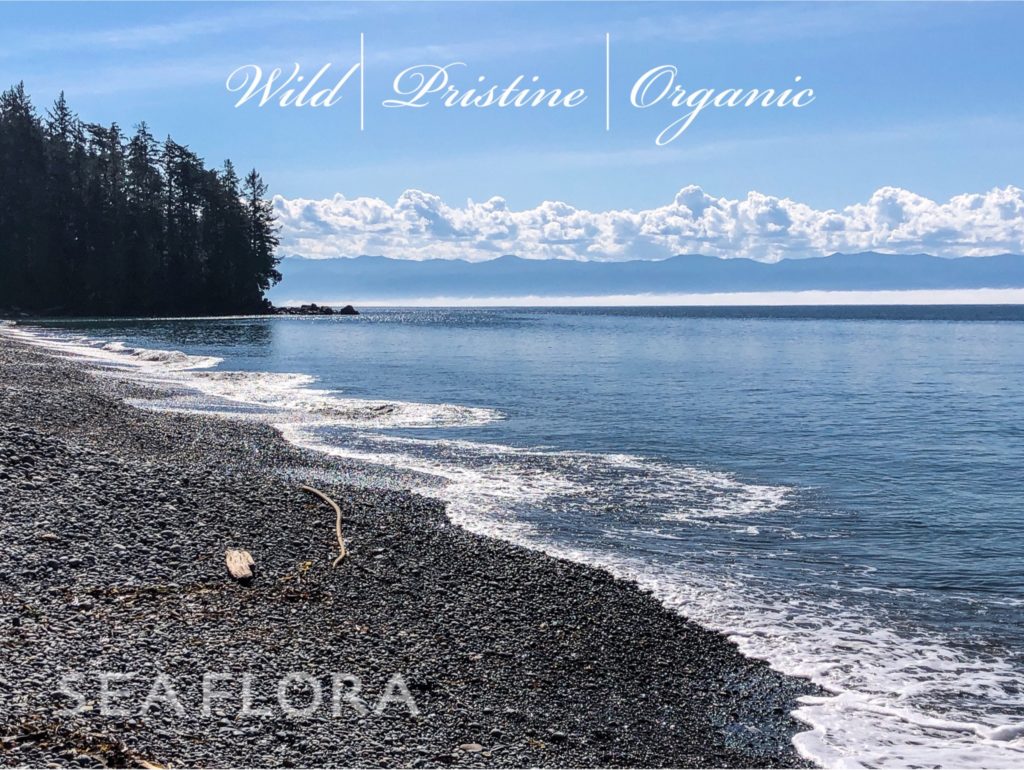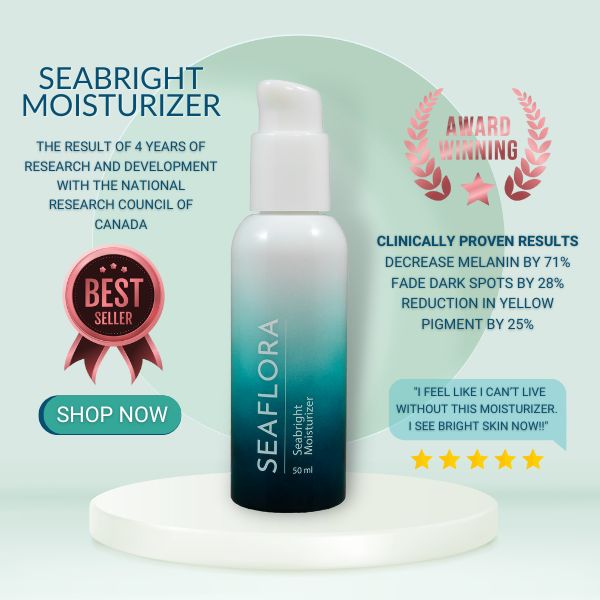Toxic Skin Care Ingredients to Avoid
Sadly, skincare these days is largely unregulated. Ingredients that are banned in Canada can still be sold here if imported in a product from another part of the world. It is so important to be knowledgeable about the common poisonous ingredients found in many popular skincare brands. In this blog, we’ll break down exactly why and give you a list of common toxic ingredients to avoid.
Our skin absorbs up to 60% of what is topically applied. This means, what you’re putting on your skin is JUST as important as what you’re eating. Health starts inside and works it’s way out. If the systems are working well, the skin will report that! Your skin is just like a report card of how well the internal systems are doing. Exercising, eating right and making sure you’re getting all the vitamins, minerals and nutrients your body needs is essential to a healthy lifestyle. So, why counteract all that hard work by applying toxic skincare ingredients topically.
At Seaflora, we like to say, if you couldn’t eat the product you’re applying, it’s not safe enough to apply it to your skin. A portion of anything you apply enters through your skin and eventually into your blood stream, ultimately affecting your whole body. You want to make sure what you’re applying will only benefit your internal and external systems, not harm them!

Common Toxic Ingredients in Skin Care
Below, we’ve given you a list of toxic skincare ingredients that are often found in cosmetics and other body products. Read the packaging of anything you apply to your skin and check for ingredients to avoid. From sunscreen to shampoos to face creams and makeup, the ingredients of anything that sits on your skin matters!
- Formaldehyde – Common ingredient in hair straightening products, nail polish, eyelash glue, and an array of other cosmetics. But there’s a catch with this one. While it’s unlikely that you’ll see the word “formaldehyde” on an ingredient label, it might be hiding behind all sorts of other names. It may show up as Formaldehyde, quaternium-15, DMDM hydantoin, imidazolidinyl urea, diazolidinyl urea, polyoxymethylene urea, sodium hydroxymethylglycinate, 2-bromo-2-nitropropane-1,3-diol (bromopol) and glyoxal according to the Campaign for Safe Cosmetics. These products release formaldehyde over time and cause the exact same harm to your body.
- Synthetic fragrances – When an ingredient label simply says “fragrance”, “aroma” or “parfume/parfum,” it’s often an umbrella term for hundreds of chemicals that brands aren’t required to disclose
- Phtalates – These are a compound hiding under the “fragrance” umbrella. Sometimes used to help perfume stick to skin, as well as in eyelash adhesive and nail polish.
- Parabens – Butyl, propyl and ethyl parabens have been linked to hormone disruption. These are preservatives that are found in a wide variety of cosmetics. Some brands have put “paraben-free” on their labels which is a good thing to check for when looking at the ingredient lists of your products. Other names for this ingredient could be Ethylparaben, butylparaben, methylparaben, propylparaben, isobutylparaben, isopropylparaben, or other ingredients ending in –paraben
- Mineral oil – A common additive to lip gloss, concealer, eyeshadow, SPF, and balm cleansers. From a health and environmental standpoint, it’s a byproduct of petrolatum. Mineral oil also goes by the name of paraffin and has been shown to carry carcinogenic impurities.
- Polyethylene glycol (PEGs) – Propylene glycol (PG) and Butylene glycol (BG) could potentially be petroleum derived and irritate the skin. These are used as chemical thickeners in skincare and are sometimes found in cream-based products.
- Siloxanes – Also known as cyclical silicones, (on an ingredient list as Fragrance, musk ketone, musk xylene, galaxolide, or tonalide) they are found in a variety of cosmetic and skincare products. They don’t have a good impact on the environment and have been shown to be linked with endocrine disruptors. According to the EDW, endocrine disruptors may be linked with increasing the production of certain hormones; decreasing the production of others; imitating hormones; turning one hormone into another; interfering with hormone signaling; telling cells to die prematurely; competing with essential nutrients and more. Dimethicone is considered safer, but is still something to avoid due to it possibly causing skin irritation and allergic contact dermatitis. This will present with a red, itchy, scaly rash. It has also been shown to worsen acne by occluding (to close up or block off) the pores in the skin.
- Triclosan (TSC) and Triclocarban (TCC) – Often found in hand sanitizers and antibacterial soap, these are antimicrobial ingredients that have been linked to such a significant impact on the thyroid and reproductive hormones, that it has been banned in several countries. The US has started to move to ban it from antiseptic soap, but it can still show up in deodorants, mouthwashes, shaving creams, and toothpastes.
- Ethanolamines – Sometimes listed as monoethanolamine (MEA), diethanolamine (DEA), or triethanolamine (TEA), these compounds are found in foundations, mascaras, and skincare products. Although classified as safe, they’re also shown to be allergens, so be cautious if you experience sensitivities to certain products.
- Oxybenzone – This is another endocrine disruptor that can be found in many skincare products that contain sunscreen. This includes lotions, lip balms, cleansers, fragrance, and even baby products. check your ingredient list for Benzophenone, ingredients containing the word benzophenone (for example benzophenone-2), BP# (for example BP2), oxybenzone, sulisobenzone, sulisobenzone sodium.
- Octinoxate – A common sunscreen ingredient that is irritating to sensitive skin. Also look for Octinoxate, o methoxycinnamate (OMC), parsol, parsol MCX, parsol MOX, escalol, 2-ethylhexyl p-methoxycinnamate.
- Homosalate – A chemical that’s commonly used in sunscreens as a UV absorber. Regulations are starting to wisen up about octinoxate and oxybenzone, although homosalate is still commonly used. Watch for Homosalate, Homomenthyl salicylate, HMS, HS; 3,3,5-trimethyl-cyclohexyl-salicylate on the ingredient label.
- Toluene – Also goes by the name of Butylated Hydroxytoluene, or BHT and is linked with brain toxicity. Can be especially dangerous during pregnancy. It’s banned in the EU and Southeast Asia as well as by a few retailers in the US, but you can still find it nail polish, nail treatments and hair dyes.
- Talc – Is often used as a smoothing agent in mineral makeup and is generally safe, but this ingredient has the potential to be contaminated with asbestos. Asbestos is a known carcinogen and instigator of lung disease.
- PFAs and PFCs – These are a class of thousands of chemicals hiding under the “fragrance” ingredients. They’re chemicals that contain fluoride that have been found in sunscreens, hair products, and shaving creams. According to the National Toxicology Program in the U.S., they’re linked to serious health effects, including cancer, thyroid disease, and reduced effectiveness of vaccines. PFCs are big culprits in waterproof makeup because they’re water repellents.
- Teflon – Teflon is a specific brand name of PFA. Polytetrafluoroethylene (PTFE) is added to some cosmetics to improve the texture, although it’s linked to hormone disruption and reproductive issues.
- Resorcinol – This is a common ingredient in hair color and bleaching products and has been linked to skin irritation and immune system dysfunction. In certain animal studies, this chemical can disrupt normal thyroid function.
- Carbon black – Often found in mascara and eyeliner. Is sometimes also listed on the label as Carbon black, D & C Black No. 2, acetylene black, channel black, furnace black, lamp black, or thermal black.
That’s a bit of a daunting list isn’t it? Thankfully, the Campaign for Safe Cosmetics and EDW Skin Deep are both amazing sources to check the ingredient lists in your cosmetics, makeup and skincare products. Making sure your skincare is non-toxic, organic and/or all natural, and reading the ingredients carefully before you buy can be one of the best ways to keep your body healthy and happy. Why would you go through all the work of making sure you eat healthy and exercise, just to reverse all that hard work by applying a toxic skincare product? Stay educated, and you’ll stay healthy!
Why is Seaweed Skincare a Healthy Option?

According to a study by the US National Library of Medicine, “Cosmeceuticals are often used in dermatology to enhance the skin tone, skin glow, and provide anti-aging benefits.” Although, not all cosmeceuticals are safe! “Currently, many synthetic chemicals have been used in cosmetic products, many of them did not get synthetic customer satisfaction due to high cost and unsafe nature in terms of side effects. For example, chemicals like hydroquinone, arbutin, and kojic acid are being used as a skin whitening agent, but they are reported to be unstable and they also cause dermatitis and induce cancer.”
Instead of toxic skincare ingredients, seaweed shows promise that it has the same benefits as any chemical brightening ingredient. In a study with the National Research Council of Canada, Seaflora discovered that the unique kelp bioactives in our Organic Seaweed Elixir, when compared to Kojic Acid and Arbutin, were more effective at brightening the skin in a 4 week trial period. The Seabright Kelp Complex™ scientifically shows to be faster and more effective at reducing melanin. It inhibits the key enzyme tyrosinase at lower concentrations than arbutin and kojic acid. It works in two ways – directly inhibiting tyrosinase and toning down melanocyte activity. Check out our blog explaining the science behind our Seabright Moisturizer for more information!
More and more skin care producers are realizing that their ingredient lists matter. Seaflora believes in complete honesty when it comes to what we put in our products. That’s why we have a complete ingredient glossary on our website that gives you the names and descriptions of the contents of our certified organic products.


